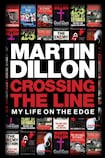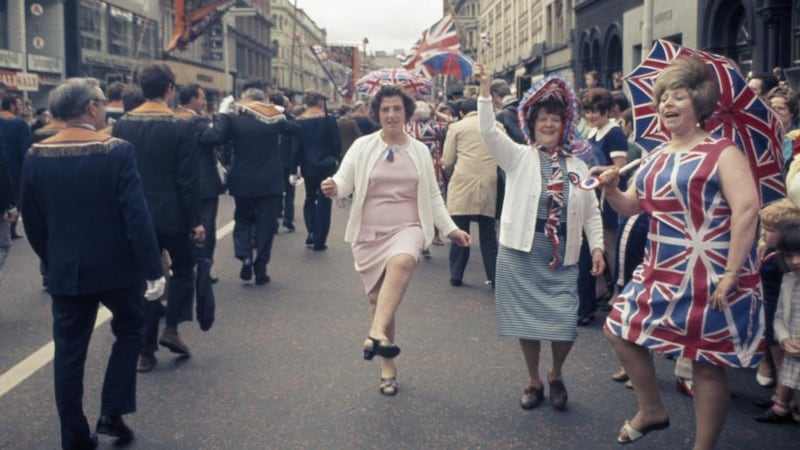
In the early 1970s Martin Dillon was a young reporter for the Irish News in Belfast. Many mornings, he writes in this memoir, his news editor would dispatch him to alleyways where bodies had been dumped. In his many books Dillon has never spared his readers the horrific physicality of the political violence he witnessed. His gory classic is The Shankill Butchers, about the gang that used to capture vulnerable Catholics on the streets, torture them with knives and finally kill them, sometimes as a kind of stage show for drinkers in a loyalist club. There is no getting over reading such a book.
As a child, Dillon says, he asked his Aunt Bridget, who prayed constantly for the conversion of the Soviet Union and the salvation of the “black babies in Africa”, why she did not include the Protestants of Shankill Road, as Uncle Willie Joe said they were heathens too. She gave him to understand that those people were beyond salvation. Dillon became a challenger of such sectarian orthodoxies, an insister upon the complexities of Irish history.
He evokes the Protestant and Catholic families sheltering on the slopes of Black Mountain during the Blitz, a few years before his birth, in the early 1950s, and tells us his grandfather fought on the Normandy beaches but in Belfast was branded Catholic and therefore anti-British. Another uncle was in the IRA. Dillon denounces the “egregious pro-Nazi sentiment” behind Éamon de Valera’s signing a book of condolences for Hitler in Dublin. No wonder as a child he imagined the Border to be “so high no one could see over it”.

His mother began by fretting that her boys would let the side down by going out in bleached jeans. Before long she was waiting up, terrified, for them to come home safe
The eldest, along with his twin brother, of 10 siblings, Dillon grew up on Falls Road, although the family later moved to the Cliftonville area, which was initially more middle class and mixed but became extremely dangerous. His mother started out fretting that her boys would let the side down by going out in bleached jeans and lace-up boots. Before long she was waiting up, terrified, for them to come home safe.
The opening chapters affectionately evoke Dillon’s eccentric family, including his uncle Gerard Dillon, the now celebrated painter. Dillon recalls bohemian nights in Dublin with Gerard and his painter friends, including Arthur Armstrong and George Campbell. He quotes from a letter in which Gerard passionately discusses the colours of Connemara. After Gerard died he and Campbell would sit on the floor, listening to the adagio of a Bruch violin concerto and crying.
Dillon interviewed many politicians, the most “arrogant and obnoxious” of them the British prime minister Edward Heath. He went to Heath’s mansion in Salisbury “armed” with information that the PM had told a secret committee set up to brief him on Northern Ireland that it was legal to shoot protesters if they obstructed soldiers. In an effort to break the ice Dillon complimented Heath on his art collection. Heath’s reply was blunt: “What would you know about art?”
Dillon was one of the first to explore the "dirty war" and the sinister interagency rivalry that characterised British intelligence services in their relationships with their networks of paramilitary informers. One of his books led to conflict with his editor at the Belfast Telegraph. He moved to the BBC, and stayed for almost 20 years. He was amazed to discover that on Twelfth of July unionist grandees joined BBC executives for a drinks party to celebrate the Orange parades as they passed Broadcasting House in Belfast. He was surprised to learn that colleagues relied "almost exclusively" on information provided by the RUC press office.
Dillon created iconoclastic programmes that brought people from the most afflicted areas into furious dialogue with politicians, police chiefs, comedians and writers
A brilliant producer, Dillon recruited talented outsiders and created iconoclastic programmes that brought people living in the most afflicted areas into furious dialogue on air with politicians, police chiefs, comedians and writers. He worked with Paul Muldoon, became friends with Denis Johnston and Seán Ó Faoláin. He warred with the bureaucratic hierarchy and describes skulduggery and bad behaviour. There is much settling of scores. And relish taken therein.
The family history is also troubled, not least by rows about the valuable estate Gerard left. Dillon is convinced bad deals were done, papers destroyed to conceal Gerard and his siblings’ homosexuality. He and his own siblings have split into factions. “There is much that I could write on this topic,” he says. But “I decided to limit my comments to one or two matters”. He gets a lot off his chest.
Dillon finally admitted that despite his cavalier attitude he was terrified by the death threats he received as a journalist. He left 20 years ago and now lives, with his third wife, in New York. He misses, he says, Ireland’s gentleness. That is not the first quality that springs to mind in the reading of this vivid and fascinating book.
Susan McKay is an author and former Northern Ireland editor of the Sunday Tribune








